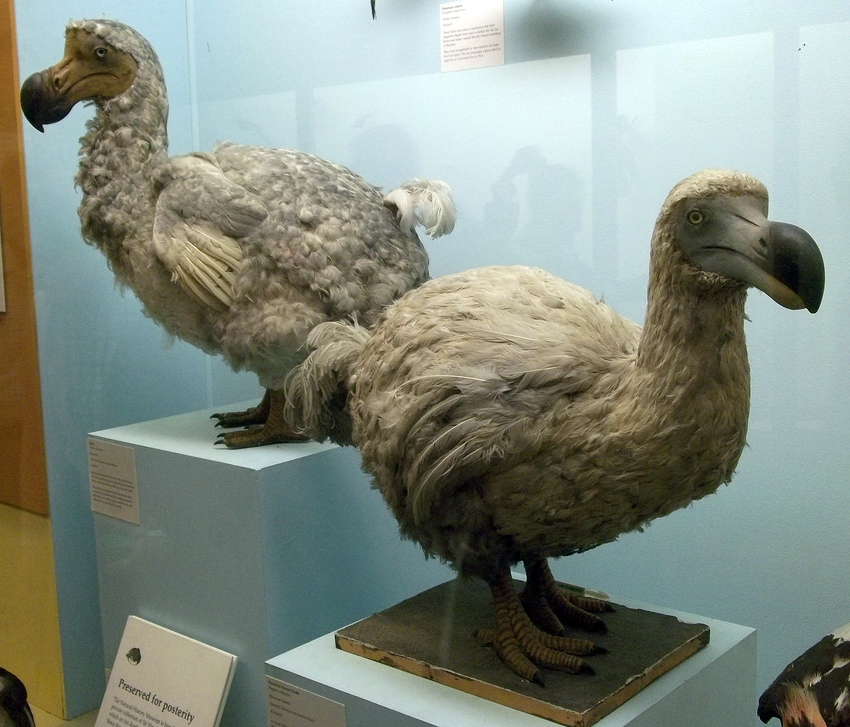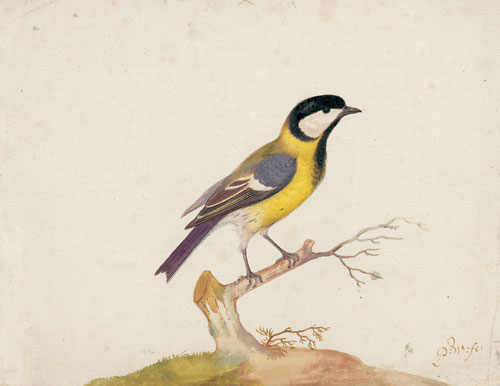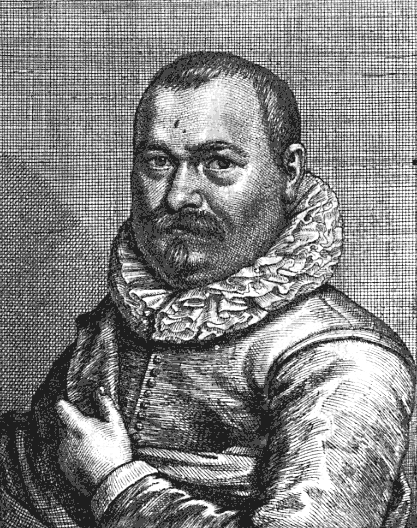|
Réunion Ibis
The Réunion ibis or Réunion sacred ibis (''Threskiornis solitarius'') is an extinct species of ibis that was endemic to the volcanic island of Réunion in the Indian Ocean. The first subfossil remains were found in 1974, and the ibis was first scientifically described in 1987. Its closest relatives are the Malagasy sacred ibis, the African sacred ibis, and the straw-necked ibis. Travellers' accounts from the 17th and 18th centuries described a white bird on Réunion that flew with difficulty and preferred solitude, which was subsequently referred to as the "Réunion solitaire". In the mid 19th century, the old travellers' accounts were incorrectly assumed to refer to white relatives of the dodo, due to one account specifically mentioning dodos on the island, and because 17th-century paintings of white dodos had recently surfaced. However, no fossils referable to dodo-like birds were ever found on Réunion, and it was later questioned whether the paintings had anything to do ... [...More Info...] [...Related Items...] OR: [Wikipedia] [Google] [Baidu] |
Paleoart
Paleoart (also spelled palaeoart, paleo-art, or paleo art) is any original artistic work that attempts to depict prehistoric life according to scientific evidence. Works of paleoart may be representations of fossil remains or imagined depictions of the living creatures and their ecosystems. While paleoart is typically defined as being scientifically informed, it is often the basis of depictions of prehistoric animals in popular culture, which in turn influences public perception of and fuels interest in these animals. The word paleoart is also used in other informal sense, as a name for prehistoric art, most often cave paintings. Alternative concept of this term is the domain of archeological society. The term "paleoart"–which is a portmanteau of ''paleo'', the Ancient Greek word for "old", and "art"–was introduced in the late 1980s by Mark Hallett for art that depicts subjects related to paleontology, but is considered to have originated as a visual tradition in early 180 ... [...More Info...] [...Related Items...] OR: [Wikipedia] [Google] [Baidu] |
Pieter Withoos
Pieter Withoos (1655 – 23 April 1692), was a Dutch Golden Age painter. Withoos was born in Amersfoort. According to Houbraken he was the second son of Mathias Withoos, brother to the painters Johannes, Frans and Alida Withoos.Pieter Withoos Biography in ''De groote schouburgh der Nederlantsche konstschilders en schilderessen'' (1718) by Arnold Houbraken, courtesy of the He painted flowers and all sorts of small insects and animals in watercolours, mostly for albums of garden art collectors. [...More Info...] [...Related Items...] OR: [Wikipedia] [Google] [Baidu] |
Bertrand-François Mahé De La Bourdonnais
Bertrand-François Mahé, comte de La Bourdonnais (11 February 169910 November 1753) was a French naval officer and colonial administrator, in the service of the French East India Company. Biography La Bourdonnais entered the service of the French East India Company as a lieutenant. In 1724, he was promoted to captain, and displayed such bravery in the capture of Mahé on the Malabar Coast that the name of the town was added to his own; although an alternative account suggests that the town adopted his name, rather than the other way around. For two years he was in the service of the Portuguese Viceroy, but in 1735 he returned to French service as governor of the Isle de France (now Mauritius) and the Île de Bourbon (Réunion). His first five years' administration of the islands was vigorous and successful. He significantly increased the enslaved African population in Isle de France (Mauritius) which grew from only 638 in 1735 by around 1,300 annually. Labourdonnais also brough ... [...More Info...] [...Related Items...] OR: [Wikipedia] [Google] [Baidu] |
Subsidiary Structures Of The Palace Of Versailles
Five subsidiary structures located near the Palace of Versailles have a historical relation with the history and evolution of the palace. Of these five structures – the Ménagerie, the Pavillon de la Lanterne, the Trianon de Porcelaine, the Grand Trianon (also called the Marble Trianon), and the Petit Trianon – two have been destroyed (the Ménagerie and the Trianon de Porcelaine); however, historical documentation and accounts permit these two structures to be discussed. As an ensemble of buildings related to, yet removed from, the chateau of Versailles, they represent architectural masterworks of the 17th and 18th centuries that have inspired architects to this day. Ménagerie In response to increased interest in zoology—and especially with regard to Aristotelian theology, which experienced a renaissance through the works of Claude Perrault; as well as the passion for the exotic, Louis XIV ordered the construction of the Ménagerie in 1662. Completed in 1664, the Ménage ... [...More Info...] [...Related Items...] OR: [Wikipedia] [Google] [Baidu] |
Tract (literature)
A tract is a literary work and, in current usage, usually religious in nature. The notion of what constitutes a tract has changed over time. By the early part of the 21st century, a tract referred to a brief pamphlet used for religious and political purposes, though far more often the former. Tracts are often either left for someone to find or handed out. However, there have been times in history when the term implied tome-like works. A ''tractate'', a derivative of a tract, is equivalent in Hebrew literature to a ''chapter'' of the Christian Bible. History The distribution of tracts pre-dates the development of the printing press, with the term being applied by scholars to religious and political works at least as early as the 7th century. They were used to disseminate the teachings of John Wycliffe in the 14th century. As a political tool, they proliferated throughout Europe during the 17th century. They have been printed as persuasive religious material since the invention ... [...More Info...] [...Related Items...] OR: [Wikipedia] [Google] [Baidu] |
Rodrigues
Rodrigues (french: Île Rodrigues, link=yes ; Creole: ) is a autonomous outer island of the Republic of Mauritius in the Indian Ocean, about east of Mauritius. It is part of the Mascarene Islands, which include Mauritius and Réunion. Rodrigues is of volcanic origin and is surrounded by coral reef, and some tiny uninhabited islands lie just off its coast. The island used to be the tenth District of Mauritius; it gained autonomous status on 10 December 2002, and it is governed by the Rodrigues Regional Assembly. The capital of the island is Port Mathurin. The islands of Rodrigues, Agaléga and Saint Brandon form part of the larger territory of the Republic of Mauritius. Its inhabitants are Mauritian citizens. , the island's population was about 41,669, according to Statistics Mauritius. Most of the inhabitants are of African descent. Its economy is based mainly on fishing, farming, handicraft and a developing tourism sector. Etymology and history The uninhabited island w ... [...More Info...] [...Related Items...] OR: [Wikipedia] [Google] [Baidu] |
Raphine
The Raphinae are a clade of extinct flightless birds formerly called didines or didine birds. They inhabited the Mascarene Islands of Mauritius and Rodrigues, but became extinct through hunting by humans and predation by introduced non-native mammals following human colonisation in the 17th century. Historically, many different groups have been named for both the dodo and the Rodrigues solitaire, not all grouping them together. Most recently, it is considered that the two birds can be classified in Columbidae, often under the subfamily Raphinae. The first person to suggest a close affinity to the doves was Johannes Theodor Reinhardt, whose opinions were then supported by Hugh Edwin Strickland and Alexander Gordon Melville. Recent extractions of DNA from the dodo and Rodrigues solitaire, as well as 37 species of doves, has found where in Columbidae the raphines should be placed. Surprisingly, raphines are not the most primitive columbid, instead they are grouped with the Ni ... [...More Info...] [...Related Items...] OR: [Wikipedia] [Google] [Baidu] |
Rodrigues Solitaire
The Rodrigues solitaire (''Pezophaps solitaria'') is an extinct flightless bird that was endemic to the island of Rodrigues, east of Madagascar in the Indian Ocean. Genetically within the family of pigeons and doves, it was most closely related to the also extinct dodo of the nearby island Mauritius, the two forming the subfamily Raphinae. The Nicobar pigeon is their closest living genetic relative. Rodrigues solitaires grew to the size of swans, and demonstrated pronounced sexual dimorphism. Males were much larger than females and measured up to in length and in weight, contrasting with and for females. Its plumage was grey and brown; the female was paler than the male. It had a black band at the base of its slightly hooked beak, and its neck and legs were long. Both sexes were highly territorial, with large bony knobs on their wings that were used in combat. The Rodrigues solitaire laid a single egg that was incubated in turn by both sexes. Gizzard stones helped digest ... [...More Info...] [...Related Items...] OR: [Wikipedia] [Google] [Baidu] |
François Leguat
François Leguat (1637/1639 – September 1735) was a French explorer and naturalist. He was one of a small group of male French Protestant refugees who in 1691 settled on the then uninhabited island of Rodrigues in the western Indian Ocean. The colonists became discontented with their life on the island and after a stay of two years managed to escape to Mauritius in a small boat. Leguat arrived back in Europe in June 1698 and wrote a book recounting his adventures which was published in 1708. In his book Leguat describes several species of birds and tortoises that were endemic to Rodrigues but are now extinct. Life François Leguat was a French Huguenot originating from the Province of Bresse, now part of the department of Ain, who fled to Holland in 1689 after the revocation of the Edict of Nantes in 1685. Marquis Henri du Quesne had published a book giving a glowing description of the island of Réunion and, with the cooperation of the Dutch East India Company, was planning ... [...More Info...] [...Related Items...] OR: [Wikipedia] [Google] [Baidu] |
Huguenot
The Huguenots ( , also , ) were a religious group of French Protestants who held to the Reformed, or Calvinist, tradition of Protestantism. The term, which may be derived from the name of a Swiss political leader, the Genevan burgomaster Bezanson Hugues (1491–1532?), was in common use by the mid-16th century. ''Huguenot'' was frequently used in reference to those of the Reformed Church of France from the time of the Protestant Reformation. By contrast, the Protestant populations of eastern France, in Alsace, Moselle, and Montbéliard, were mainly Lutherans. In his ''Encyclopedia of Protestantism'', Hans Hillerbrand wrote that on the eve of the St. Bartholomew's Day massacre in 1572, the Huguenot community made up as much as 10% of the French population. By 1600, it had declined to 7–8%, and was reduced further late in the century after the return of persecution under Louis XIV, who instituted the '' dragonnades'' to forcibly convert Protestants, and then finally revoke ... [...More Info...] [...Related Items...] OR: [Wikipedia] [Google] [Baidu] |
Marooning
Marooning is the intentional act of abandoning someone in an uninhabited area, such as a desert island, or more generally (usually in passive voice) to be marooned is to be in a place from which one cannot escape. The word is attested in 1699, and is derived from the term maroon, a word for a fugitive slave, which could be a corruption of Spanish ''cimarrón'' (rendered as "symeron" in 16th–17th century English), meaning a household animal (or slave) who has "run wild". The practice was a penalty for crewmen, or for captains at the hands of a crew in cases of mutiny. Generally, a marooned man was set on a deserted island, often no more than a sand bar at low tide. He would be given some food, a container of water, and a loaded pistol so he could die by suicide if he desired. The outcome of marooning was usually fatal, but William Greenaway and some men loyal to him survived being marooned, as did pirate captain Edward England. The chief practitioners of marooning were 17th and 1 ... [...More Info...] [...Related Items...] OR: [Wikipedia] [Google] [Baidu] |
Roelandt Savery
Roelant Savery (or ''Roeland(t) Maertensz Saverij'', or ''de Savery'', or many variants; 1576 – buried 25 February 1639) was a Flanders-born Dutch Golden Age painter. Life Savery was born in Kortrijk. Like so many other artists, he belonged to an Anabaptist family that fled north from the Spanish-occupied Southern Netherlands when Roelant was about 4 years old and settled in Haarlem around 1585. He was taught painting by his older brother Jacob Savery (c. 1565 – 1603) and Hans Bol. After his schooling, Savery traveled to Prague around 1604, where he became court painter of the Emperors Rudolf II (1552–1612) and Mathias (1557–1619), who had made their court a center of mannerist art. Between 1606 and 1608 he traveled to Tyrol to study plants. Gillis d'Hondecoeter became his pupil. Before 1616 Savery moved back to Amsterdam, and lived in the Sint Antoniesbreestraat. In 1618 he settled in Utrecht, where he joined the artist's guild a year later. His nephew Hans w ... [...More Info...] [...Related Items...] OR: [Wikipedia] [Google] [Baidu] |









